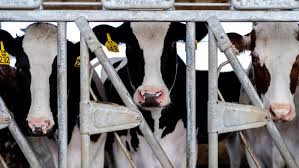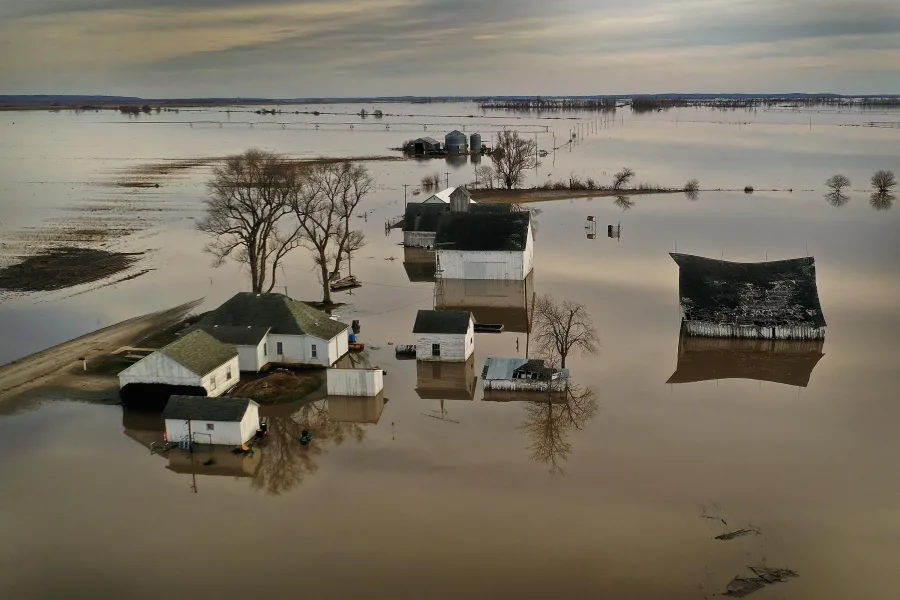Learn how dairy farmers deal with supply chain issues during pandemics. What problems do they encounter with feed supply and product distribution? Discover the answers now.

Though it is a significant component of our diet and essential for rural economies, the dairy sector suffers major supply chain problems. These issues become evident during disturbances like the COVID-19 epidemic, influencing labor availability, feed supplies, and transportation of perishable goods. Strengthening the sector against further shocks depends on an awareness of these difficulties. The issues dairy producers deal with and the consequences of supply chain disruptions are investigated in this paper. It advises calculated actions to foster sustainability and resilience. Every disturbance highlights the connectivity of our supply chains and the necessity of solid and adaptable mechanisms to help farmers and food security.
Understanding the Supply Chain: A Lifeline for Dairy Farmers
Dairy producers rely on the milk supply chain for revenue, so its efficiency and strength are vital. Unlike other agricultural sectors, dairy production is complex because milk is perishable and mainly generated locally. This regional dairy supply chain in the United States needs help to incorporate modern technologies to guarantee seamless milk delivery from farmers to customers.
Truck drivers play a pivotal role in the dairy supply chain, especially during periods of high demand, such as the COVID-19 pandemic. Handheld tools have revolutionized real-time tracking and communication, enhancing the efficiency of transportation logistics. When integrated with advanced routing and scheduling systems, these tools are instrumental in optimizing milk shipping, reducing delays, and minimizing spoilage. More than a technological tool, this innovation is a beacon of hope for a resilient supply chain, helping to avert transportation and storage issues.
Further difficulties arise from supply systems’ worldwide character. International commerce compromises the system even as it expands markets. Disturbances in anything—from feed imports to export logistics—can have broad consequences. We need a robust local system to manage global problems like pandemics without drastically affecting consumers or farmers. This system must include local feed production, varied export markets, and contingency strategies for many possibilities. These steps will help improve the dairy sector’s resilience and lessen the dependence on worldwide supply networks.
Seasonal variations in dairy output further add to the complexity and need for careful planning and production balance. To satisfy consumer needs, farms must control times of both shortage and excess. Good supply chain management and seamless manufacturing, transportation, and storage coordination are essential. This guarantees milk’s continuing excellent quality from farm to table.
From Farm to Table: Where the Breakdown Begins
Although milk’s route from farm to table calls for exact coordination, the COVID-19 epidemic highlighted several areas needing work. Delays in animal feed deliveries harmed dairy farms, influencing cow health and output levels.
Milk’s delivery to processing facilities also presented problems. Although routing software seeks to maximize paths, truckers’ growing dependence on portable devices and the localized character of the U.S. milk supply chain caused delays resulting from interstate limits and labor shortages.
Processing factories turn raw milk into many goods. Products like cheese, with longer manufacturing cycles, were disrupted, affecting supply and financial stability. Seasonal production alters imply farms have to balance their capability for output. Data insights offered by precision dairy farming technologies help to maximize these processes.
The supply chain has to be able to resist unplanned interruptions. Advanced technology promises more resilience and efficiency. The epidemic underlined the importance of infrastructure investment and backup preparation. To help the sector be stable, dairy producers and associated players must improve the supply chain.
The Domino Effect: How Feed Supply Disruptions Impact Dairy Farms
For dairy farms, feed delivery interruptions cause significant problems rather than minor annoyances. Interventions in forage and basic grains may alter dairy product quality, lessen milk output, and decrease cow productivity. Finding other feed sources raises expenses and calls for speedy adaptation to new nutrition profiles, which runs the danger of compromising cattle health.
American regional milk supply networks exacerbate these issues as farmers in certain regions experience localized shortages and price swings, taxing profit margins. This problem emphasizes the importance of intelligent logistics and necessary backup preparation.
Technology may assist in lowering these risks using precision dairy farming, a data-driven method of dairy farm management, and sophisticated monitoring and logistical tools. Modern routing and scheduling tools, as well as handheld tools for drivers, help to enhance milk movement. Still, the 80,000-pound weight restriction for trucks complicates matters. Resolving feed supply interruptions requires a diverse strategy, including regulatory support, planning, and creativity to safeguard the dairy sector.
Logistics Nightmares: Distribution Challenges in the Dairy Industry
Outside interruptions and inefficiencies aggravate the logistical problems facing the dairy sector. Particularly in times of great demand or disturbance like the COVID-19 epidemic, the geographical character of milk supply networks in the United States makes distribution more difficult and results in bottlenecks and delays.
The 80,000-pound weight restriction for trucks is one major issue, raising transportation expenses and impacting dairy logistics’ carbon footprint. Although computerized routing and scheduling help to enhance transportation, rules still need to be improved.
The dairy supply chain is brittle, and timely, temperature-regulated deliveries are vital. Any delay could damage the safety and freshness of products, leading to financial losses. Though they have increased productivity, innovations like mobile gadgets and real-time monitoring software must be deployed more broadly—especially on smaller farms.
For goods with extended expiry dates, rail travel might be a more consistent, reasonably priced choice that helps relieve road traffic load. But this requires infrastructure growth and investment, taxing an already strained sector.
The logistical problems of dairy distribution draw attention to the necessity of changes and fresh ideas. Stakeholders have to cooperate to strengthen and simplify the supply chain. Dairy producers, supply chain partners, legislators, and regulators should all be part of this cooperation. Working together, funding technology, and supporting legislative reforms can help improve the dairy supply chain and increase its resilience to future shocks. These group efforts are necessary for weaknesses to continue undermining the sector’s stability and expansion.
Pandemics Unveiled: COVID-19 and Its Toll on Dairy Farms
The COVID-19 epidemic underlined the relationship between farm operations and distribution and demonstrated how brittle the dairy supply chain may be. Lockdowns impacted labor, hindering farm maintenance and milk output.
Farmers had to contend with tight rules and move to selling directly to customers when eateries shuttered. The 80,000-pound weight restriction for vehicles transporting significant milk volumes makes transferring such quantities more difficult.
Feed shortages caused by global supply chain problems degraded herd health and output. With fewer employees and tight health regulations, processing plants suffered, reducing capacity.
Technology may be helpful here. Digital technologies and precision dairy farming enhance information and communication. Smaller farms, however, may require assistance to pay for these expenditures.
COVID-19 made clear that a more robust, adaptable supply chain is vital. Reviewing truck weight restrictions and rail travel might make the system more resistant to future issues.
Financial Struggles: The Economic Impact of Supply Chain Disruptions on Dairy Farmers
Dairy producers struggled greatly financially during COVID-19. Disturbances in the supply chain caused delays and added financial burdens. The unexpected decline in demand from restaurants, businesses, and schools left farmers with excess perishable goods, hurting their financial situation.
The problem worsened with the regional character of milk supply networks in the United States. Unlike centralized processes, the scattered dairy business had more significant financial difficulties and delays. Seasonal variations in dairy output further complicate the matching of market demand.
Though costly—many farmers cannot afford them—technological solutions like precision dairy farming might increase supply chain efficiency. Truck transportation expenses rise with the 80,000-pound weight restriction. Although other technology developments and mobile gadgets aid, their initial cost might be a deterrent.
Ultimately, the economic effects of supply chain interruptions during COVID-19 showed the financial systems of the dairy industry. To address these problems, we must increase resilience, use modern technology, and advocate laws simplifying logistics.
Future-Proofing: Strategies for Building a More Resilient Dairy Supply Chain
Dairy producers. Must act pro-ahead to keep their businesses free of issues. Precision dairy farming, among other technological instruments, helps monitor herd health and production during disturbances. Effective routing and scheduling tools help milk go to processing facilities, lowering logistical risk.
A localized approach to milk production provides stability by limiting dependence on long-distance transportation, minimizing interruptions, and supporting sustainability. This approach reduces the carbon impact and cuts the journey distance.
One must use sustainable supply chain techniques. Investing in renewable energy, such as solar or biogas, lessens the need for outside sources and satisfies customer demand for environmentally friendly goods.
Solid and honest ties with suppliers are essential. Creative portable tools help processors, farmers, and truckers coordinate better. Sharing real-time data enables fast reactions to disturbances.
Finally, dairy farms should have contingency plans for all disturbances, from severe storms to pandemics. These strategies should include many sources for necessary materials and different ways of delivery. Dairy producers who foresee difficulties and equip themselves might convert weaknesses into assets.
The Bottom Line
Many dairy producers depend critically on the dairy supply chain. Particularly in times like the COVID-19 epidemic, disruptions may lead to shortages of feed supplies and issues transporting goods to customers. They looked at how these disturbances affected the GDP. Any disturbance has a significant effect on farmers as well as the whole sector. Strategies for a robust supply chain must so be followed strictly.
Policymakers and businessmen should prioritize strengthening the dairy supply chain. New technology and financial assistance, among other support tools, should help farmers cope with interruptions. Moreover, increasing consumer knowledge might support resilience development. We can safeguard dairy farming’s future by encouraging adaptable plans and sustainable methods.
Fixing supply chain weaknesses in the dairy sector is vital socially and economically. Being proactive will guarantee dairy producers a solid and sustainable future.
Key Takeaways:
- The COVID-19 pandemic highlighted critical vulnerabilities within the dairy supply chain, emphasizing the need for more robust, resilient systems.
- Technological advancements, such as handheld communication devices and sophisticated routing software, can mitigate disruptions and enhance efficiency in dairy logistics.
- Localizing supply chains and investing in infrastructure, such as rail transportation for dairy products, can reduce dependency on global logistics and extend product shelf life.
- Sustainable practices, including adopting renewable energy sources, offer dual benefits of reducing reliance on external suppliers and meeting eco-conscious consumer demands.
- Innovative solutions and strategic planning are essential to navigating the complexities of seasonal dairy production and effectively balancing supply and demand.
Summary:
The dairy sector is facing significant supply chain challenges due to the COVID-19 pandemic, impacting labor availability, feed supplies, and perishable goods transportation. Modern technologies can help ensure seamless milk delivery by incorporating handheld tools that revolutionize real-time tracking and communication, optimizing milk shipping, reducing delays, and minimizing spoilage. A robust local system is needed to manage global problems without affecting consumers or farmers. Good supply chain management and seamless manufacturing, transportation, and storage coordination are essential for maintaining milk quality. Precision dairy farming technologies can help maximize processes and resist unplanned interruptions. Stakeholders must cooperate to strengthen and simplify the supply chain, funding technology, and supporting legislative reforms to improve the dairy supply chain and increase resilience to future shocks. To address the economic effects of supply chain disruptions during COVID-19, dairy producers must act proactively, using technological instruments like precision dairy farming, effective routing and scheduling tools, a localized approach to milk production, sustainable supply chain techniques, strong supplier relationships, and contingency plans.












